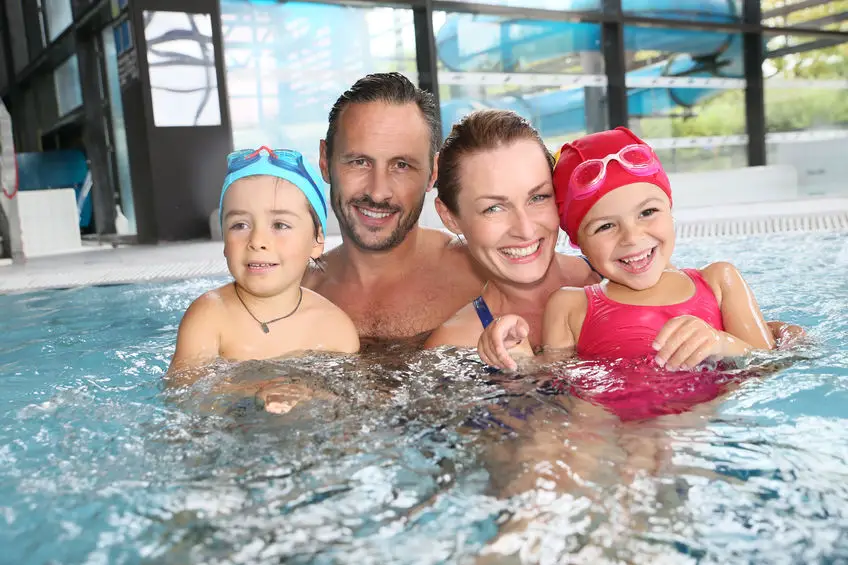In this day and age when the dangers of invisible viruses or germs can rear their ugly head from anywhere or any place in the world, a little precaution can go a long way. Pool water would be a place where most families will be spending most of their time, this Summer. How can we be sure whether the public Pools will be sanitized and disinfected properly and have what is determined as safe by County Health Officials that test City Pools and Water Parks for Public Pool Chlorine Levels?
Ask the Lifeguard what Free Cl residuals are in Public pool & Spa
Use a Pool & Spa Cl Electronic Meter & check yourself
EPA & CDC recommend
1 to 3 ppm for pools
1 to 3 ppm for spas.
National Swimming Pool Foundation
1 to 3 ppm ideal
1 to 4 ppm safe for pools (1 ppm-lowest & 5 ppm-highest)
Spas-1 to 3 ppm ideal.
The Counties in each State have the last say and do inspections but on average including EPA, Association For Pool & Spa Professionals, the CDC, and The National Swimming Pool Foundation most agree on what is considered safe and unsafe. That’s not to say that it is at all times. A simple water test for Chlorine and pH (don’t forget pH is critical for Chlorine to work) will tell the tale at any pool at any place in the world. You decide whether your family swims now in an hour or a day.
Safe Chlorine Levels In Pool Water
With summer fast approaching memories of past vacations and holidays are filled with time spent in the water. Whether it’s your own pool or where I grew up in Levittown PA every section had its own Community Pool. Now Indoor and Outdoor Water parks are so popular families spend 3 or 4 days there. They are connected to hotels and restaurants but are centered around water slides and gigantic pools with waterfalls and rides attached to them.
With all the crowds that flock to them and there are millions besides the Campgrounds and hotels that all have indoor or outdoor swimming pools, did you ever wonder, are they clean and safe?
Who determines safe Chlorine Levels in Pools located at these businesses? Regardless of how many people or how hot it gets that weekend the Chlorine residual should be a constant so that bacteria or other things don’t have a chance to populate what your kids are not just swimming in but practically drinking.
Regardless of how frequently or what system you use to add chlorine to the water, the chlorine level should stay between 1.0 and 3.0 parts per million (ppm) to maintain a healthy pool. Even the smallest pool owner can keep that intact but think about how hard it is to keep up with when the pools are as big as Shopping Malls.
Disinfection can be done by various methods in indoor and outdoor pools. Besides Spas where Gyms and Athletic Clubs are normal. The Free residual shouldn’t be higher than 5 ppm which will hurt the swimmers.
Public pools are usually disinfected by gaseous chlorine or sodium hypochlorite but most home pools typically use stabilized chlorine. Chlorine that is stabilized will stay in the pool longer than Chlorine in Sodium Hypochlorite form.
I have been at Campsites where the County checks the swimming pool once a month and the Lifeguard keeps it going the rest of the time. I have nothing against Lifeguards! The easiest way to deal with the problem is to carry a Digital Electronic Pool and Spa Tester like this one on Amazon Something reliable and rugged especially if you are planning a vacation where you know the kids will be in pool water. I’ve been telling my friends and family since we always went camping with the kids, to check the Pool out and how’s is looking. With the probe, you’ll know.
Recreational Water Illnesses
Recreational water illnesses (RWIs) are caused by germs spread by swallowing, breathing in mists or aerosols, or having contact with contaminated water in swimming pools, hot tubs, water parks, water play areas, interactive fountains, lakes, rivers, or oceans.
Have you ever seen how many fountains mist and waves are in a Kid’s pool? It wouldn’t be much fun if it didn’t have the slides and rides that make a lot of splashing for the youngster. We can’t control chlorine residual in the rivers and ocean water but then again the kids are stacked into the same sectioned-off area in the same water all day either.
RWIs from any pool anywhere include a wide variety of infections, such as
- gastrointestinal,
- skin, ear, respiratory, eye, neurologic, and wound infections.
- The most commonly reported RWI is diarrhea.
- Diarrheal illnesses are caused by germs such as Crypto (short for Cryptosporidium), Giardia, Shigella, norovirus, and E. coli
Some of the same stuff that can drunk from a well in the mountains can make you sick if it is in your eyes or ears. Swimmer’s ear is a common result of a trip to a lake or a dirty under-supervised swimming pool. The levels of Chlorine should be checked more often in the Spa than in the pool.
What Is Combined Chlorine
Total chlorine is the sum of the Free and Combined chlorine in the pool water. Once you better understand the differences between free, combined chlorine, and total, this will be the best way to ensure that you make sure that chlorine is helping your pool and not hurting your swimmers.
Combined chlorine is the chlorine that has already been used after you add it to sanitize your water. When chlorine in the pool water comes in contact with organic material, such as skin oils, urine, or sweat, they react to form combined chlorine, also known as chloramines.
Combined chlorine is the source of a bad “chlorine” smell, red eyes, and irritated skin from pool water. If it moves over o.2 ppm then chloramines are considered a problem, and the health department starts to care.
Free chlorine is the best type we commonly test to determine the proper chlorine levels in pool water this is the amount of chlorine that is still available to sanitize your water. Free chlorine is the chlorinated water that has not interacted with any contaminants in the water.
To properly measure free chlorine in your pool, use a FAS-DPD test kit and make sure that the free chlorine is between 1.0 and 3.0 parts per million (ppm). Maintaining these levels will ensure your pool water is of ideal quality and ready to fight off contaminants that will end up in the water. Test Free Chlorine every day!
Symptoms of Chlorine Poisoning
If someone tells you that too much chlorine isn’t bad for you they’re wrong. Too much Chlorine can be bad. I would expect that the giant pool on a Sunday afternoon bumps their Chlorine residual up some to prepare for the incoming crowd that is expected. But levels above 8-10 ppm shouldn’t be kept. The problems that can affect you when there is not enough chlorine in the pool water can have an even worse effect on your skin, eyes, and lungs.
According to Urgent Care:
Symptoms of chlorine poisoning
While cases are usually few and far between, chlorine poisoning has a few telltale signs that you should be on the lookout for:
- Sudden onset of nausea and vomiting
- Burning sensation in the throat
- Itchy eyes
- Difficulty or shallow breathing
- Skin redness
- Dull chest pain.
If signs of this are persistent seek some help from someone like an Urgent Care Center that is located all around the Country.
A simple water test for Chlorine and pH (don’t forget pH is critical for Chlorine to work) will tell the tale at any pool at any place in the world. You make the decision whether your family swims now or in an hour or in a day. That would be your decision to make and not a 15-year-old kid on Summer break. Measure the Free chlorine, which is the chlorine that is leftover and is available to inactivate disease-causing organisms; it is a measure of the cleanliness of the water.
References: Public Swimming and Bathing Places
(Aquatic Facilities)
CDC-Center For Disease Control–Chlorine Testing


